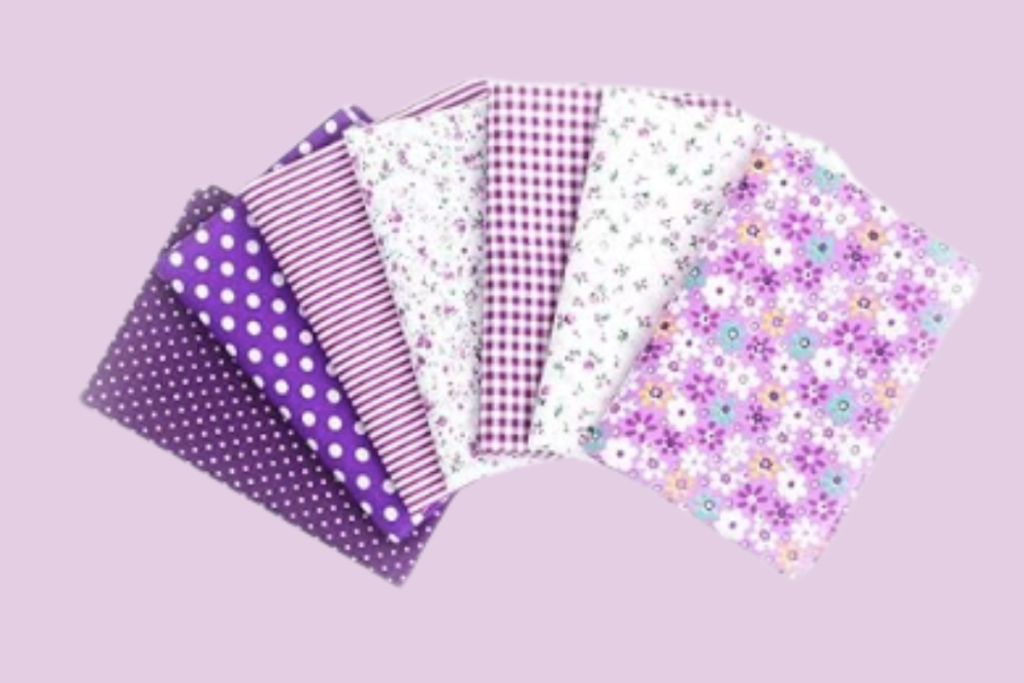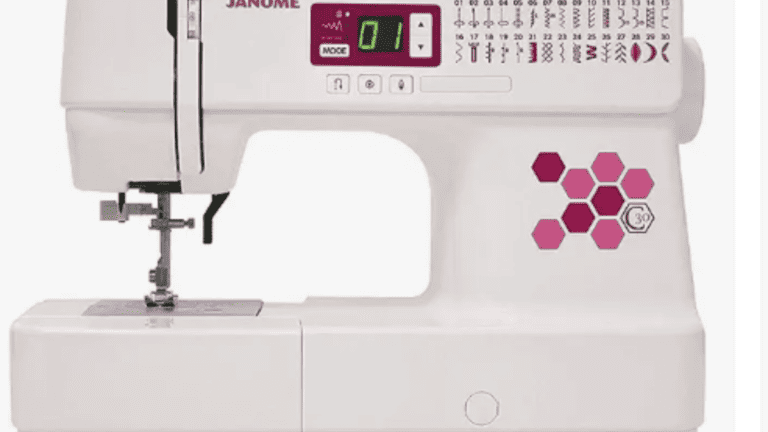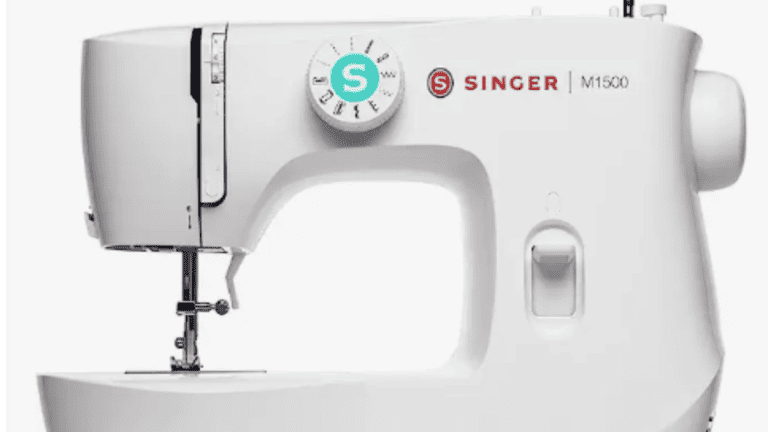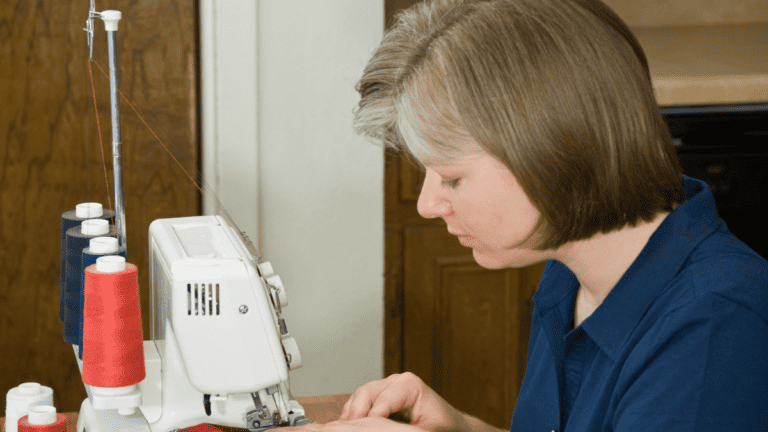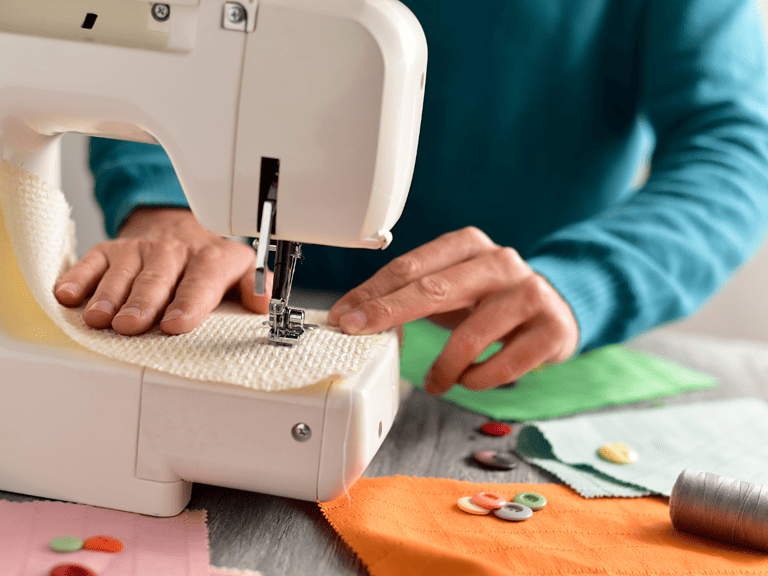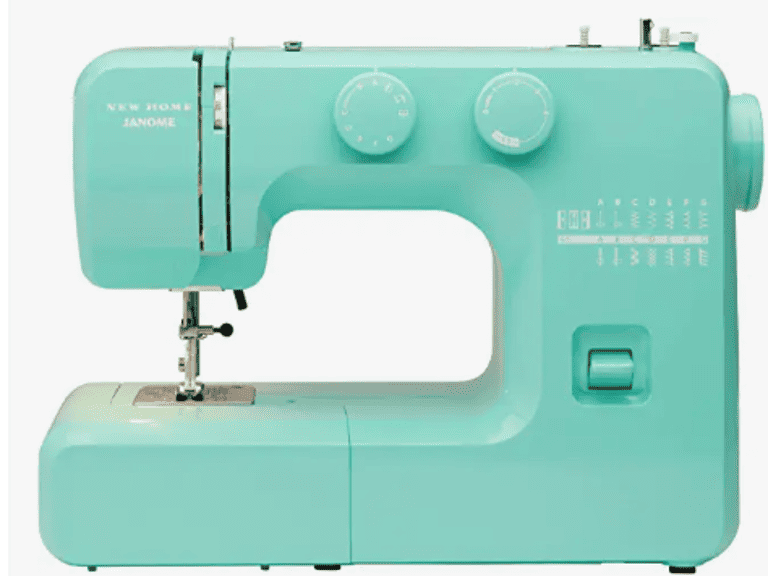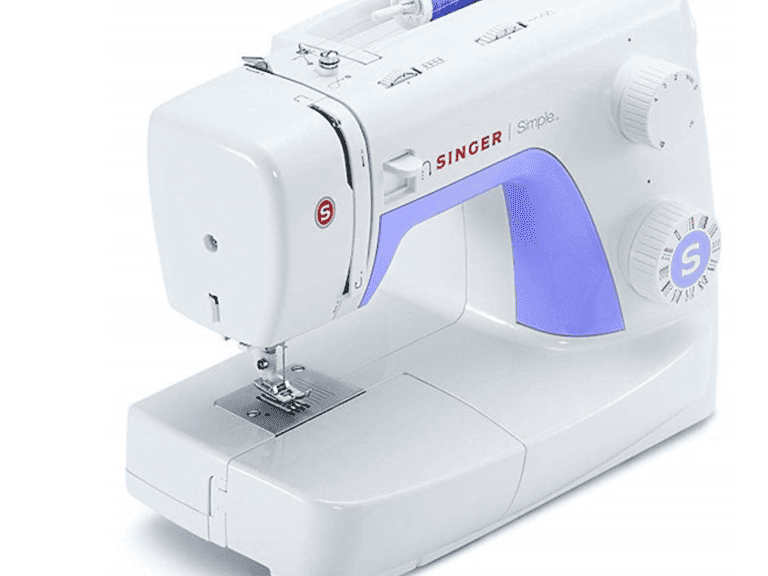6 Sewing Machine For Kids to Learn to Sew Easily
From an early age, many children develop a fascination with arts and crafts, including the art of sewing.
If your child has displayed a keen interest in sewing and enjoys working on various projects, providing them with their own sewing machine can significantly enhance their skills.
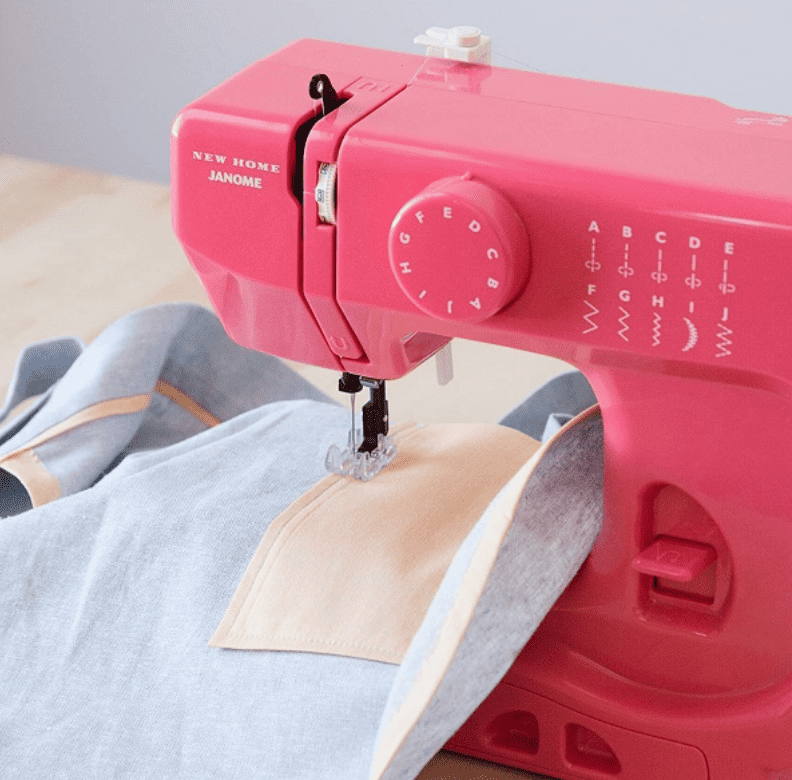
The ideal sewing machine for kids are not merely toys; they are often suitable for adult use as well.
If you’re considering purchasing a sewing machine for your child, explore our recommendations and gain valuable insights on selecting a great machine and maintaining it properly to ensure your child’s sewing journey flourishes.
Table of Contents
Best Sewing Machine for Kids
Sewing machines designed for children usually incorporate safety features to prevent accidental injuries, such as stitching over their little fingers. Some sewing machines go a step further by being particularly “kid-friendly,” available in vibrant colors or adorned with charming patterns. If you desire a machine that will adapt as your child grows, selecting a new machine with a neutral color and avoiding designs that may seem too juvenile as they mature can be a wise choice.
Magicfly mini sewing machine for kids
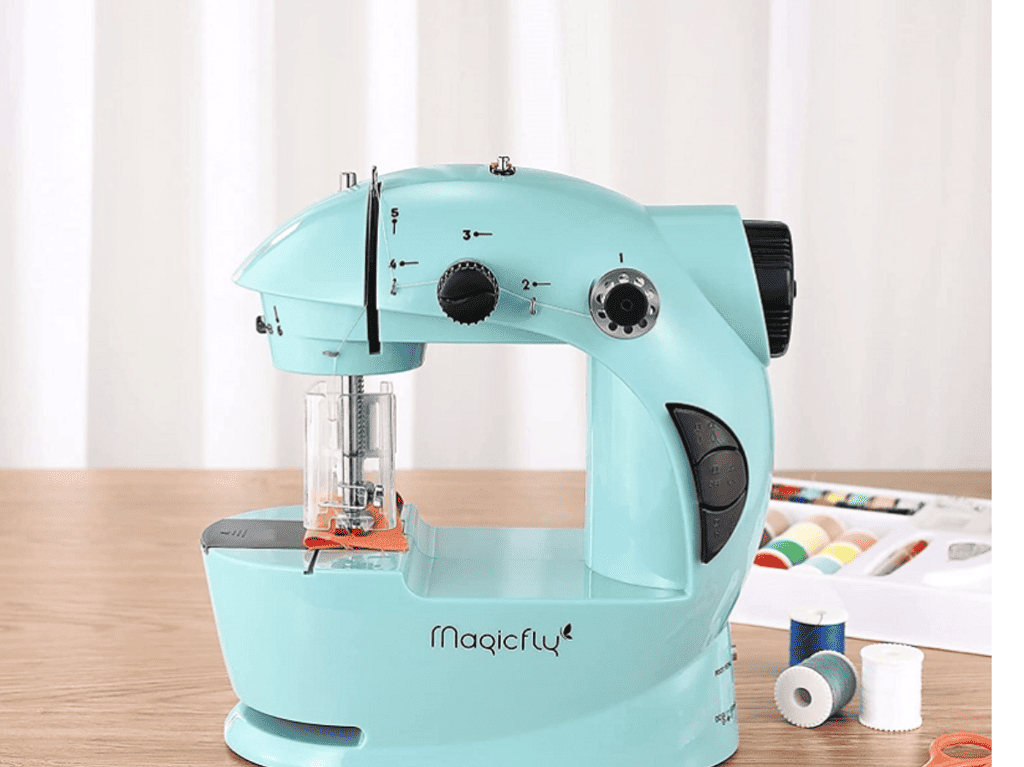
Isn’t this machine absolutely adorable? While it is commonly used as a travel machine due to its compact size and lightweight nature, it also serves as the perfect machine for kids. Despite its tiny appearance, it offers all the essential features required by a novice seamstress.
With an extension table for ample working space, a foot pedal for convenient control, the option of battery power (which we absolutely love), a machine bag for easy transportation, and even a starter sewing kit complete with scissors, needles, measuring tape, thread, and bobbins.
This machine is the perfect choice that provides excellent value for money while equipping your child with all the necessary tools to embark on their sewing journey.
JUCVNB Mini Sewing Machine for Kids

PORTABLE ELECTRIC SEWING MACHINE
The Portable Electric Sewing Machine is designed for beginners, offering a lightweight and compact design that is easy to store and carry.
It provides versatility to sew both thick fabrics like denim and delicate fabrics like silk, catering to the needs of users at all skill levels.
12 BUILT-IN STITCHES AND REVERSE STITCHING
With 12 built-in stitch patterns, including straight stitches and zigzag stitches, among others, this sewing machine offers a variety of options to meet your diverse sewing needs.
You can easily preset the stitch width and length by adjusting the appropriate button, enabling customization for your projects.
DUAL POWER SOURCE AND SWITCHING OPTION
The Household Sewing Machine comes with both an AC adapter and the option to use 4 AA batteries (not included), offering flexibility for various scenarios, especially when you’re on the go.
Additionally, it features two switch modes: a pedal switch and a button switch, providing convenient and user-friendly operation.
USER-FRIENDLY OPERATION
This sewing machine includes a threading guide printed on the body, making the threading process effortless. Whether you’re a novice or an experienced sewing enthusiast, you’ll find it easy to operate.
The mini sewing machine is suitable for sewing various items such as pet clothes, shopping bags, table mats, aprons, pouches, and more, allowing you to explore your creativity with ease.
Brother XM 2701
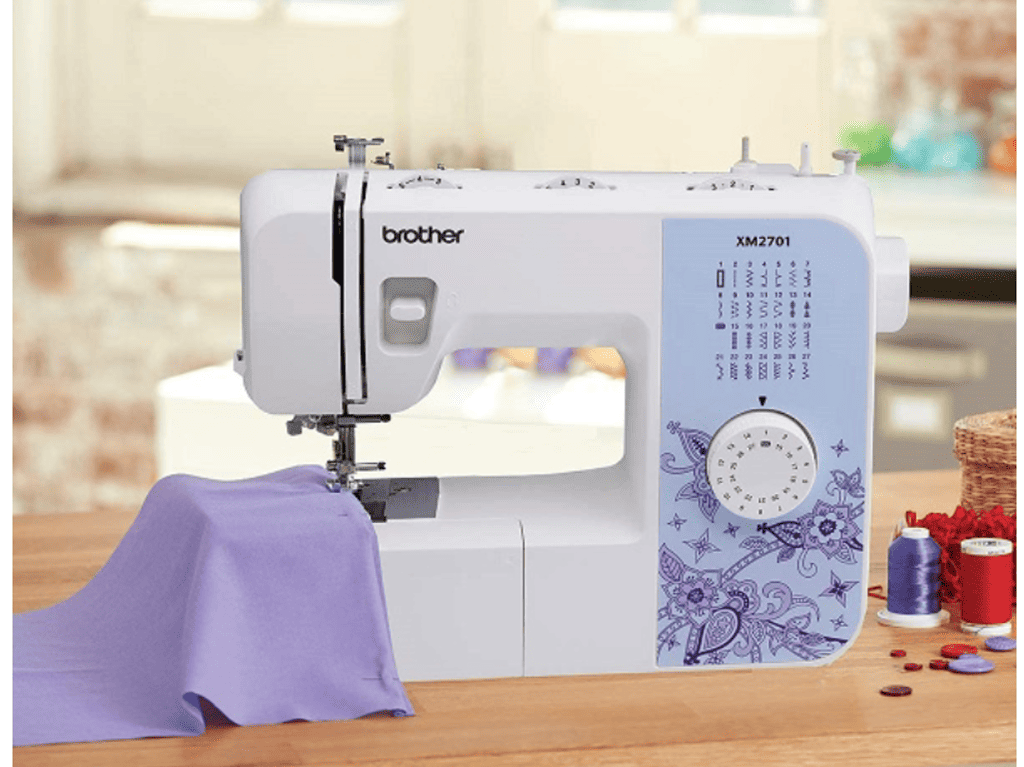
Brother, one of the leading manufacturers of sewing machines, presents the XM2701 model, equipped with convenient features for young sewers.
It showcases a drop-in bobbin system and an automatic needle threader, which prove particularly valuable for kids who may encounter challenges when setting up the bobbin or dealing with tangled threads. The automatic needle threader assists children who may struggle with aligning the thread with the needle’s eye.
The XM2701 sewing machine includes an instructional DVD and six sewing or presser feet, offering a comprehensive range of options that may exceed the needs of beginner sewers. Its lightweight construction ensures easy maneuverability, while a large dial simplifies stitch selection for kids.
Singer Tradition 2277 Sewing Machine
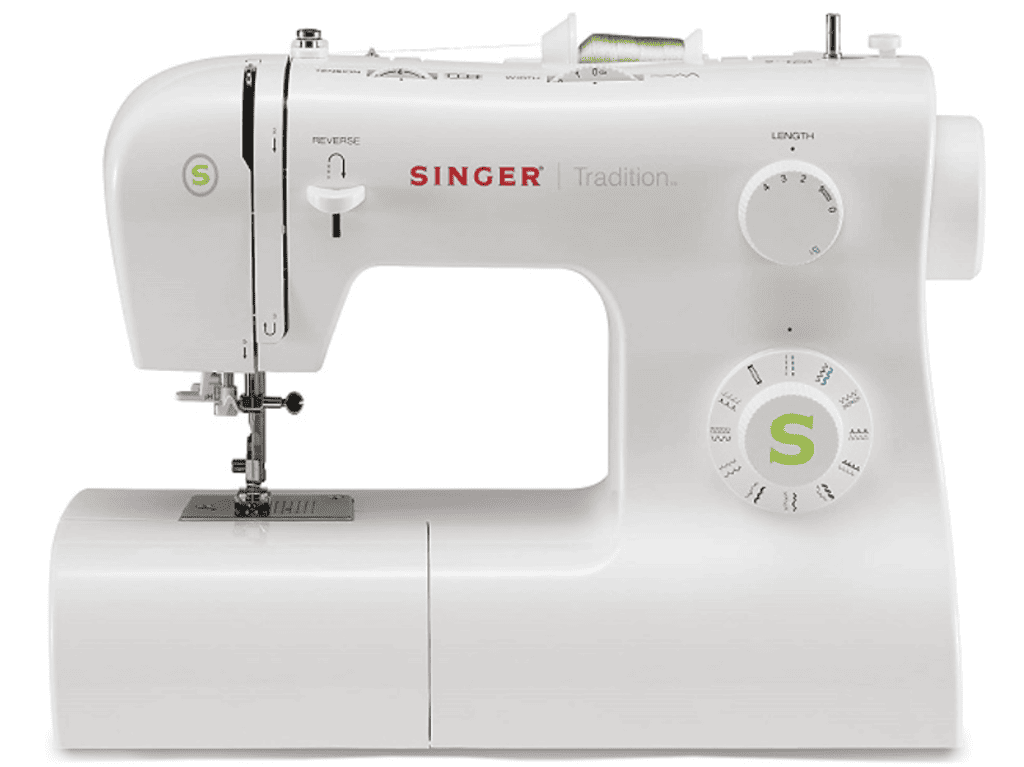
Singer is often synonymous with sewing machines, given that they pioneered the creation of home sewing machines.
Even today, Singer remains dedicated to producing user-friendly machines, including models that are ideal for kids.
The Tradition 2277 sewing machine, specifically designed for beginner sewers, stands out among them. It makes it a perfect sewing machine for kids.
It features an automatic needle threader and an automatic buttonhole maker, simplifying the sewing process.
Additionally, the machine offers an impressive range of up to 97 stitch applications, surpassing the needs of most children.
Singer Start 1304

In certain cases, simplicity reigns supreme. The Singer Start 1304 sewing machine embodies this notion with its minimalist design.
Available in white, it features a single, prominent dial that allows your child to effortlessly select their desired stitch and stitch length.
The machine boasts a convenient automatic bobbin winding feature and a generously-sized reverse button.
Furthermore, it includes three sewing feet, facilitating your child’s learning process for sewing zippers or creating buttonholes. A great sewing machine for kids.
Brother CS6000i Sewing and Quilting Machine
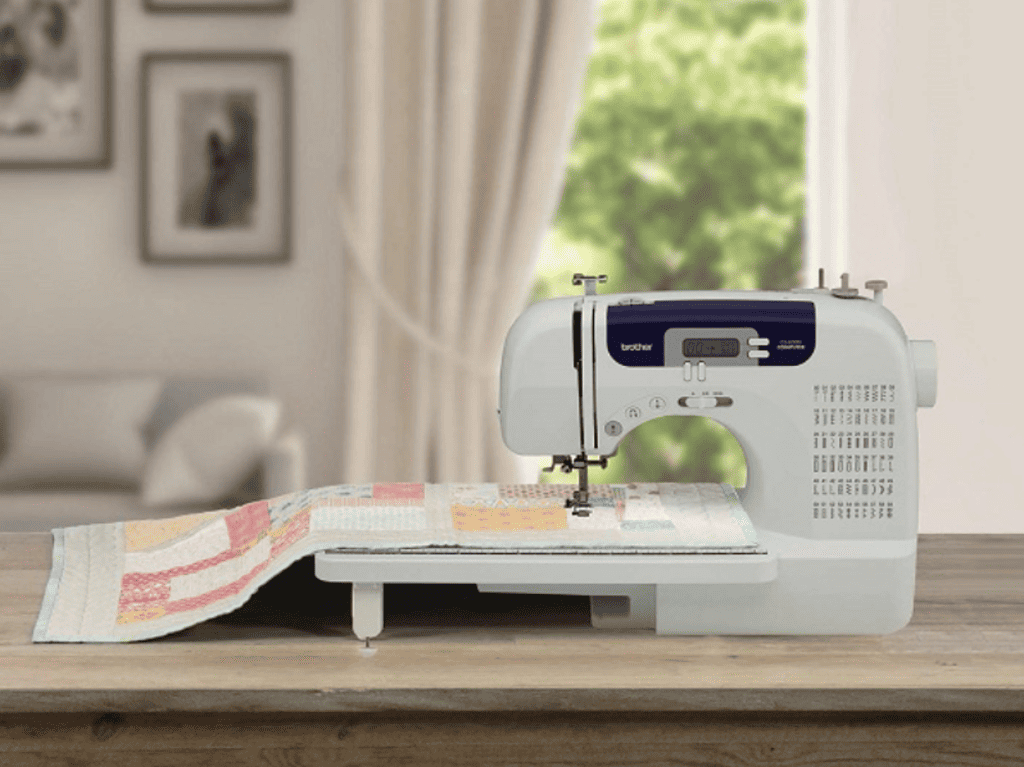
A computerized sewing machine offers a multitude of advantages over a basic mechanical model.
If your child is older or has acquired years of sewing experience, the Brother CS6000i sewing machine might be the perfect fit for them.
Computerized machines are renowned for their ability to produce precise stitches and their user-friendly adjustability, as the adjustments are computerized rather than manual.
Additionally, the CS6000i automatically regulates sewing speed, which proves particularly beneficial for kids who may struggle to maintain consistent pedal pressure.
Mechanical machines also have built-in stitches and extra features that a toy sewing machine will not.
Furthermore, it’ a great way for younger children to do simple stitches or when making child-friendly sewing projects.
It is worth noting that the CS6000i does require more maintenance and cleaning compared to mechanical sewing machines.
Additionally, it carries a higher price tag than the other machines featured on our list. It’s a great machine for older kids as they can even make their own clothes.
Must have features in a sewing machine for kids
The usability of your child’s sewing machine directly impacts their willingness to use it. Therefore, it is crucial to select a machine that is not only user-friendly but also reliable.
Furthermore, a consistently jamming or thread-tangling machine can quickly discourage a child. When choosing a sewing machine for kids, be sure to consider the following features:
Bobbin Insertion:
Proper bobbin insertion is crucial for the sewing machine to create stitches effectively. Winding and inserting the bobbin can be easier on some machines compared to others.
To minimize frustration, it’s recommended to select a sewing machine for kids with an easy-to-load bobbin.
Brother machines are known for their convenient drop-in bobbin feature, making it effortless for kids to insert or change their bobbin thread.
Stitch Options:
When it comes to stitch options, more doesn’t necessarily mean better, especially for young or novice sewers.
In fact, an abundance of stitch options can often be overwhelming and confusing. It may be wise to choose a sewing machine for kids with fewer stitch options when selecting one for your child.
Unless they have plans to create intricate quilts or engage in machine embroidery, most kids will find the most basic stitch options more than sufficient.
Starting with straight stitch and zigzag stitch is typically suitable for their initial sewing endeavors.
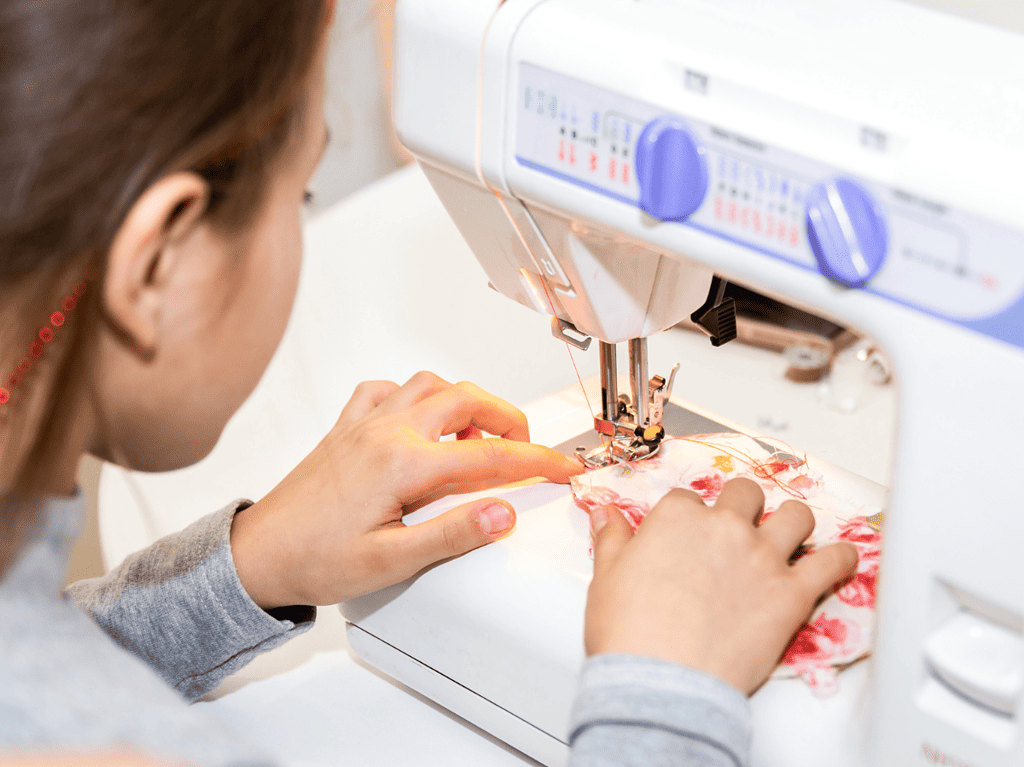
Included Accessories:
When selecting a sewing machine for kids, consider the included accessories. Ideally, the machine should come with essential accessories like a lint brush, extra bobbins, needles, and sewing or presser feet.
While the separate purchase of presser or sewing feet, such as a zipper foot or buttonhole foot, is possible, it’s not a deal-breaker if they are not included.
Dials and Controls:
The best sewing machines for kids feature controls that are easy for young children to adjust. A machine with a large dial will be simpler for a child to comprehend compared to one with numerous controls or buttons.
However, if you opt for a computerized machine, it’s likely to have more buttons. Older children who are comfortable with computerized devices will likely grasp the functionality of a computerized sewing machine more quickly than adults.
Speed:
Most sewing machines operate using a foot pedal, which can be challenging for children to control accurately. If they apply excessive pressure, the machine will run too fast, resulting in crooked stitches or tangled threads.
On the other hand, if they’re hesitant and don’t exert enough pressure, the machine will barely move. To address this, look for a sewing machine with a speed control dial.
This allows you to set the speed to a specific number of stitches per minute, ensuring a consistent pace regardless of how much pressure is applied to the pedal.
Safety Features:
Safety is a significant concern for novice sewers, regardless of age, and the fear of accidentally running over their fingers with the machine is common.
While the likelihood is low, there is a possibility of pinching a finger while stitching. Some models address this by incorporating a finger guard around the presser or sewing foot.
Furthermore, if the machine you’re interested in doesn’t have a finger guard, don’t worry. Finger guards can usually be purchased separately for added safety.
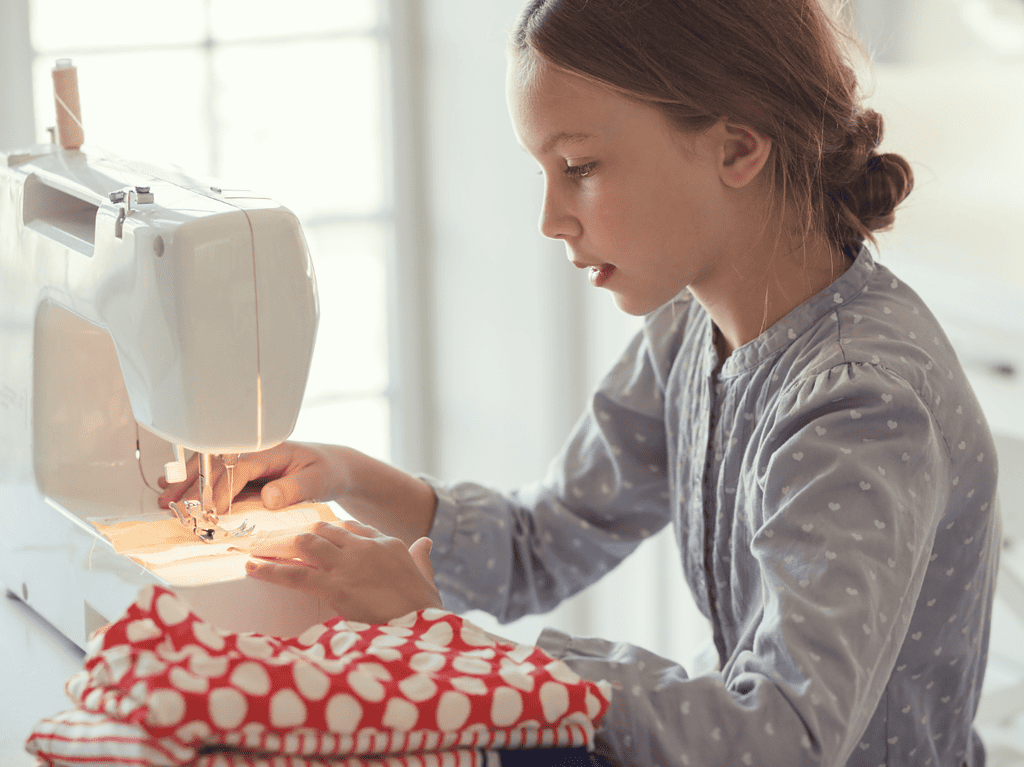
What age is appropriate for a sewing machine?
The appropriate age for kids to learn to sew can vary depending on their individual abilities and interests. Generally, children around the age of 8 to 10 years old can start learning basic sewing skills.
At this age, they have developed fine motor skills and hand-eye coordination, which are essential for sewing. It’s important to assess their readiness by observing their attention span, ability to follow instructions, and interest in arts and crafts.
Additionally, introducing sewing at a younger age, such as through simple threading activities or sewing with plastic needles, can also help foster their interest and readiness for more advanced sewing techniques later on.
As children grow older, around the ages of 10 to 12 years old, they can begin to expand their sewing skills and tackle more complex projects.
At this stage, they can handle sewing machines under proper adult supervision. Starting with straightforward projects like pillowcases, simple bags, or small accessories allows them to practice various stitches and gain confidence in their abilities.
It’s important to provide guidance, support, and patience as they navigate through new sewing techniques and overcome challenges. As they gain experience and proficiency, they can gradually take on more intricate projects and explore their creativity through sewing.
It’s worth mentioning that there is no set age limit for learning to sew. Sewing can be enjoyed by people of all ages, including teenagers and adults.
Some kids may show an interest in sewing at an earlier age, while others may discover their passion for it later on. The key is to create a nurturing and encouraging environment that fosters their love for sewing.
Additionally, providing them with appropriate tools, such as child-friendly sewing machines and safety accessories, can help ensure their comfort and safety during the learning process.
Ultimately, the appropriate age for kids to learn to sew depends on their individual readiness, interest, and the support they receive from parents or mentors.
How to maintain a sewing machine for kids
Proper maintenance is essential to ensure the longevity and optimal performance of a sewing machine for kids. One crucial aspect of maintenance is regular cleaning.
Encourage your child to clean the machine after each use by removing lint and debris from the bobbin area, feed dogs, and thread path.
They can use a small brush or a lint brush specifically designed for sewing machines.
Additionally, remind them to change needles regularly, as dull or bent needles can affect stitching quality. Teaching them these basic cleaning and needle maintenance practices will instill good habits and help keep the machine in excellent condition.
Another important aspect of maintaining a kid’s sewing machine is proper storage. Teach your child to store the machine in a dry and clean area, preferably in a protective case or dust cover when not in use.
This prevents dust, dirt, and moisture from accumulating on the machine, which can affect its performance and longevity. Furthermore, ensure that the power cord and foot pedal are neatly wrapped and secured to prevent tangling or damage.
By instilling the habit of storing the sewing machine properly, you can prolong its lifespan and keep it in optimal working condition.
Regular servicing and professional maintenance are also crucial for a kid’s sewing machine. Consider scheduling periodic check-ups with a sewing machine technician or service center to ensure that the machine is in good working order.
They can inspect and clean internal parts, lubricate moving components, and address any potential issues or repairs. Professional servicing not only enhances the machine’s performance but also ensures its safety for your child to use.
Regular maintenance will help prevent major problems and extend the lifespan of the sewing machine, providing your child with a reliable tool for their sewing projects.
Sewing Kit for Kids
While you are buying a sewing machine for kids, don’t forget the sewing supplies they will need. Here are a few of our favorite ones.
With the right sewing machine, your child can learn how to sew. A beginner sewing machine can be a toy sewing machine or one of the basic sewing machines that are a full-sized sewing machine.
Other Sewing Resources:
If you are new to sewing, we recommend that you start by learning the basics and starting with a simple project like the potholder.
Start with:
Fabric Giveaway
Enter our monthly fabric giveaway. Simply complete the tasks daily and you will be entered into the drawing. Winner will be randomly drawn on the first day of the month and notified via email
